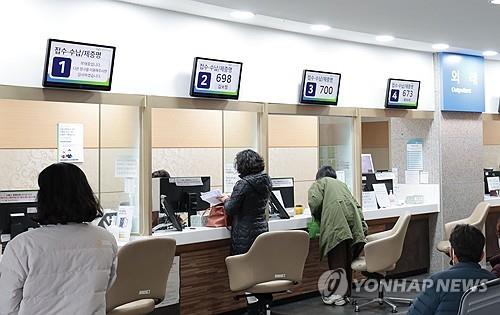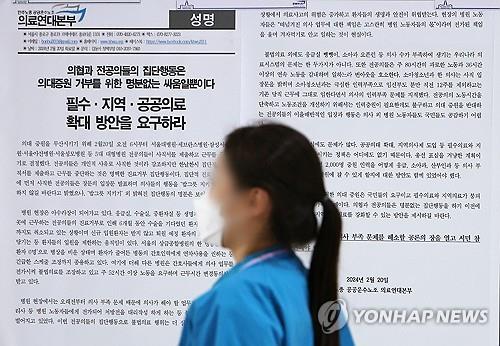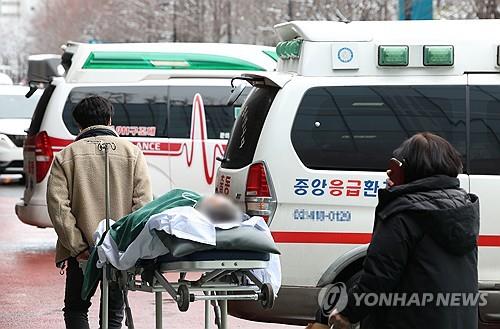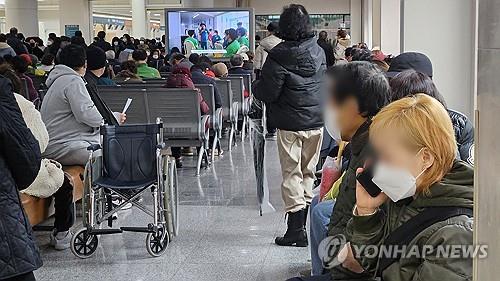- California Assembly OKs highest minimum wage in nation
- S. Korea unveils first graphic cigarette warnings
- US joins with South Korea, Japan in bid to deter North Korea
- LPGA golfer Chun In-gee finally back in action
- S. Korea won’t be top seed in final World Cup qualification round
- US men’s soccer misses 2nd straight Olympics
- US back on track in qualifying with 4-0 win over Guatemala
- High-intensity workout injuries spawn cottage industry
- CDC expands range of Zika mosquitoes into parts of Northeast
- Who knew? ‘The Walking Dead’ is helping families connect
Telemedicine fully allowed at hospitals as doctors’ mass walkout enters 4th day
The government decided Friday to fully extend telemedicine services at hospitals on a temporary basis as fears of a worsening medical system crisis have grown over the prolonged walkout by junior doctors nationwide.
Thousands of intern and resident doctors in major general hospitals in Seoul and elsewhere have walked off the job for a fourth day as they oppose the government’s plan to admit 2,000 more students to medical schools next year from the current 3,058 seats to address a shortage of doctors.
In response to the collective action, the government raised the state health crisis warning to the highest “serious” level and came up with a set of measures to minimize the impact of the move on the health and lives of the people.
“Telemedicine services will be fully allowed starting today until doctors end collective action,” Second Vice Health Minister Park Min-soo told a press briefing.
“The government will temporarily lift all regulations regarding telemedicine services. Many lower-tier local clinics, which mostly handle mild cases, are allowed to provide such services,” he added.
Telemedicine services had been partially available since 2020 in the wake of the COVID-19 pandemic under strict regulations.
Only higher-tier hospitals were entitled to provide telemedicine services for non-first-time patients, except for people in remote areas, as well as cases that take place at night and on holidays.
Doctors have long voiced opposition to the extension of telemedicine services.

As of Thursday night, 78.5 percent of the country’s 13,000 trainee doctors from 96 major hospitals in Seoul and elsewhere, or 8,897 doctors, have submitted their resignations, and 7,863 of them have not turned up to work, according to the health ministry.
The latest figure marked a slight fall from the previous day’s reading, but that does not mean that doctors have returned to work as the government was forced to exclude six hospitals from the tally due to insufficient data, it added.
Major hospitals have slashed the operation of surgery rooms to as low as 50 percent capacity, and a growing larger number of patients have experienced the postponement of surgeries and other necessary treatments.
The government received an additional 40 complaints from patients and others regarding the ongoing walkout, bringing the total such reports to 189 as of Thursday.
“Things will be a total mess if the ongoing situation prolongs for another week,” a general hospital official said.
Trainee doctors play a crucial role in emergency and acute health care duties.
Adding to the woes is that the training period for many senior-level trainee doctors, who do not join the walkout, is supposed to end this month, and the contracts of a large number of fellow doctors will also be terminated by the end of this month, according to officials.
“The workload mostly tripled, and the current system will never last long,” a fellow doctor said. “We will face a real, massive crisis after Feb. 29.”

The Korea Medical Association, a major lobby group for doctors, lambasted the government Friday for activating the highest-level disaster management protocol to address problems “that it has caused while pushing for such a populism-driven policy.”
It also claimed that the extension of telemedicine services is “absurd” as seriously ill and emergency patients cannot use such services.
Under the top-level alert mode issued in the day, the government vowed to maximize the use of public medical institutions by extending their operating hours on weekdays to the maximum and expanding weekend and holiday services.
Four additional situation rooms responsible for transporting severely ill emergency patients will be established by early next month.
It was the first time that the government activated such top-level protocols due to a medical service issue.

Fears of further disruption have grown as there appears to be no imminent breakthrough in sight, as doctors have vowed not to back down though the government has taken a firm stance against striking doctors.
The government has warned that those leading collective action could face arrest and medical licenses of doctors involved in a strike could be canceled.
A total of 11,481 medical students, or 61.1 percent of all medical school students of the country, have filed for a leave of absence as of Thursday against the quota hike plan, according to the ministry.
The government says the increase in the admission quota is needed to address a shortage of doctors, particularly in rural areas and essential medical fields, such as high-risk surgeries, pediatrics, obstetrics and emergency medicine.
The number of doctors per 1,000 people in South Korea came to 2.6, far below the average of the Organization for Economic Cooperation and Development member nations of 3.7, and the country is expected to run short of 15,000 doctors by 2035, particularly given the rapid population aging, according to the ministry.
But doctors have claimed that the move would rather compromise the quality of medical education and services, calling on the government to seek ways to better protect doctors from malpractice suits and the prosecution and increasing medical fees, among other things, to resolve the problems faced.
The government’s plan on the enrollment cap has drawn support from the public, which has been frustrated with long wait times to see doctors.
The move, meanwhile, has further fanned the craze for medical schools in South Korea, where doctors are one of the best-paid groups among all professions.













